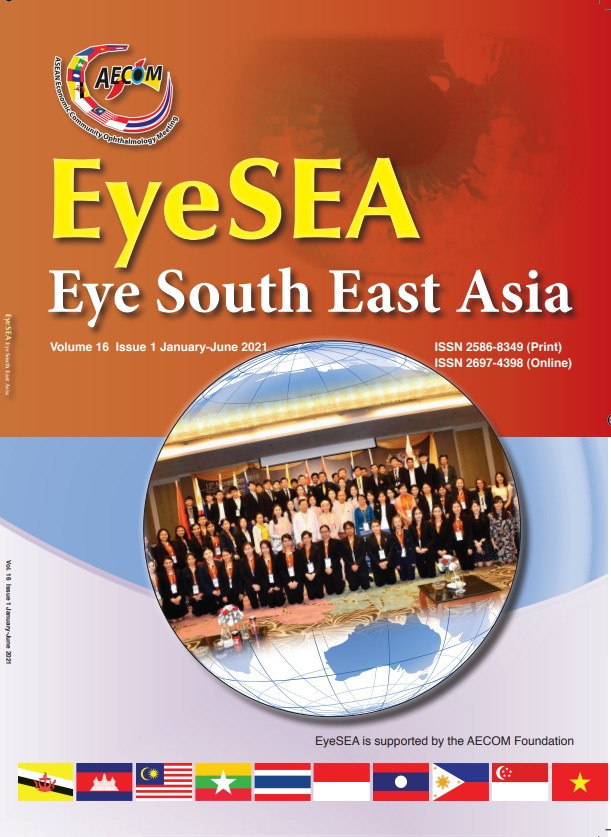The cause and complication of enucleation and evisceration of the eye in Thammasat University Hospital
Main Article Content
Abstract
Objective : To describe the causes and complications of enucleation and evisceration of the eye in Thammasat University Hospital
Design : Retrospective , descriptive study
Patients and methods : The retrospective medical record review of patients who underwent enucleation or evisceration from January 2014 to December 2018 were reviewed.
Result : Forty six patients underwent evisceration (n=35 , 76% ) and enucleation (n=11, 24%). The median age was 60 ±15.43 years (range 23 to 92) and there were 25 men and 21 women. Corneal ulcers were the most common indication for surgery (n=29, 63%), followed by endophthalmitis (n=9, 19.6 %), ruptured globe (n=4, 8.7%) and painful blind eye (n=4 ,8.7%). Postoperative complications were wound dehiscence (n=8, 66.7%), conjunctival cyst (n=3, 25%) and symblepharon (n=1, 8.3%).
Conclusions : Corneal ulcer was the most common cause of enucleation and evisceration in Thammasat University Hospital .The most common complication was wound dehiscence , average about 1 month after surgery.
Limitations : retrospective study , in one hospital in one area ; therefore , results cannot be generalized.
Keyword : enucleation ,evisceration ,corneal ulcer ,endophthalmitis


